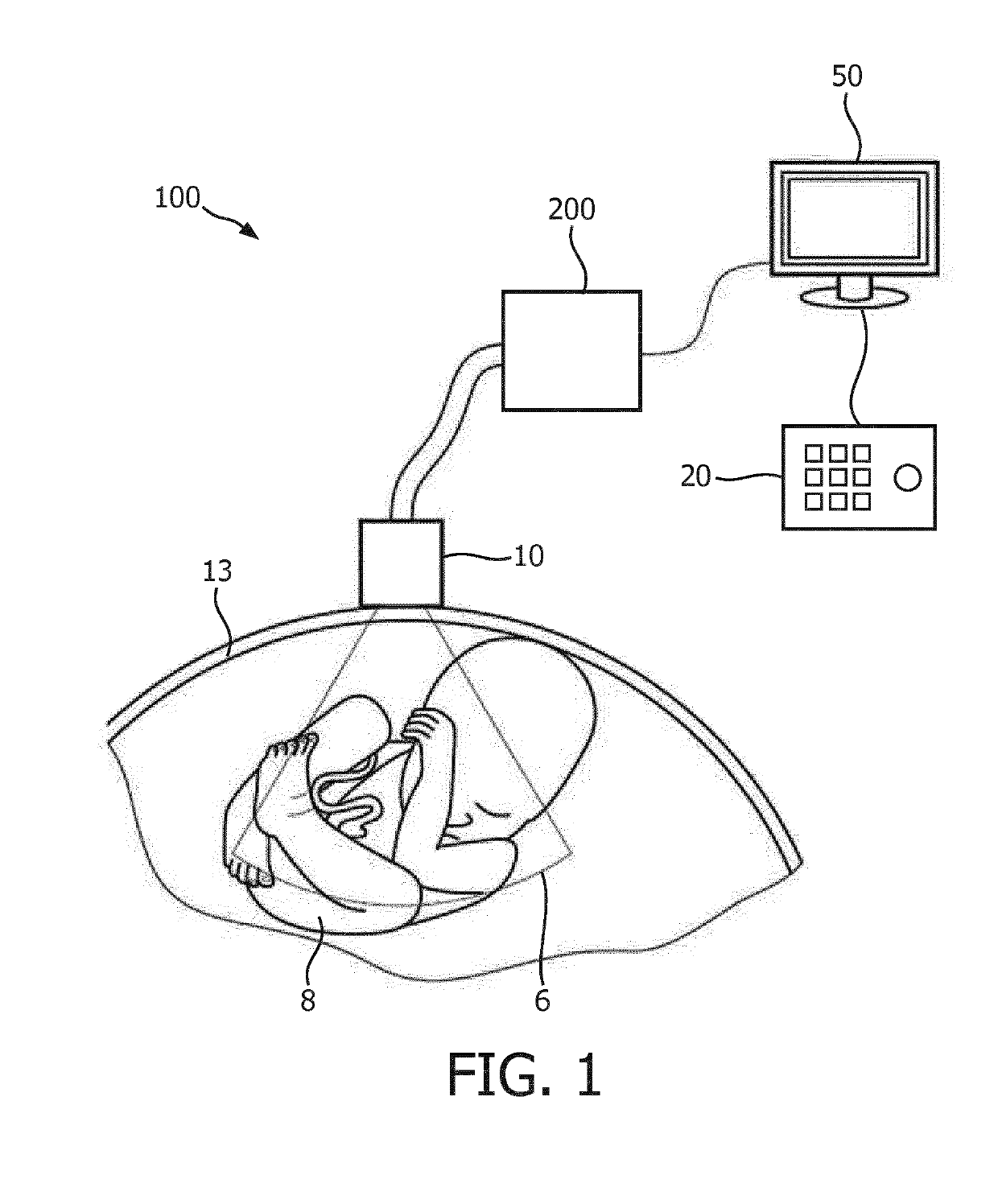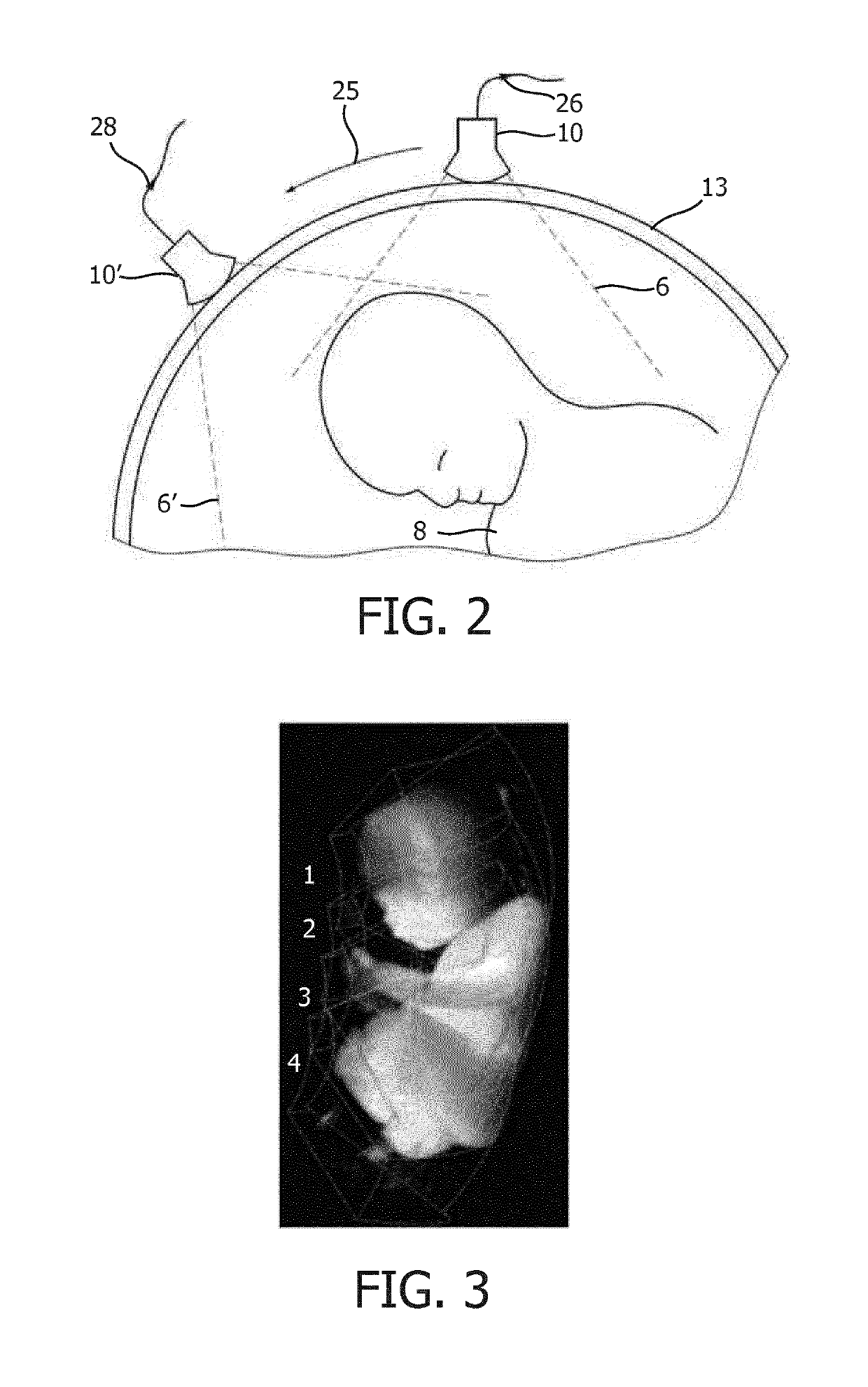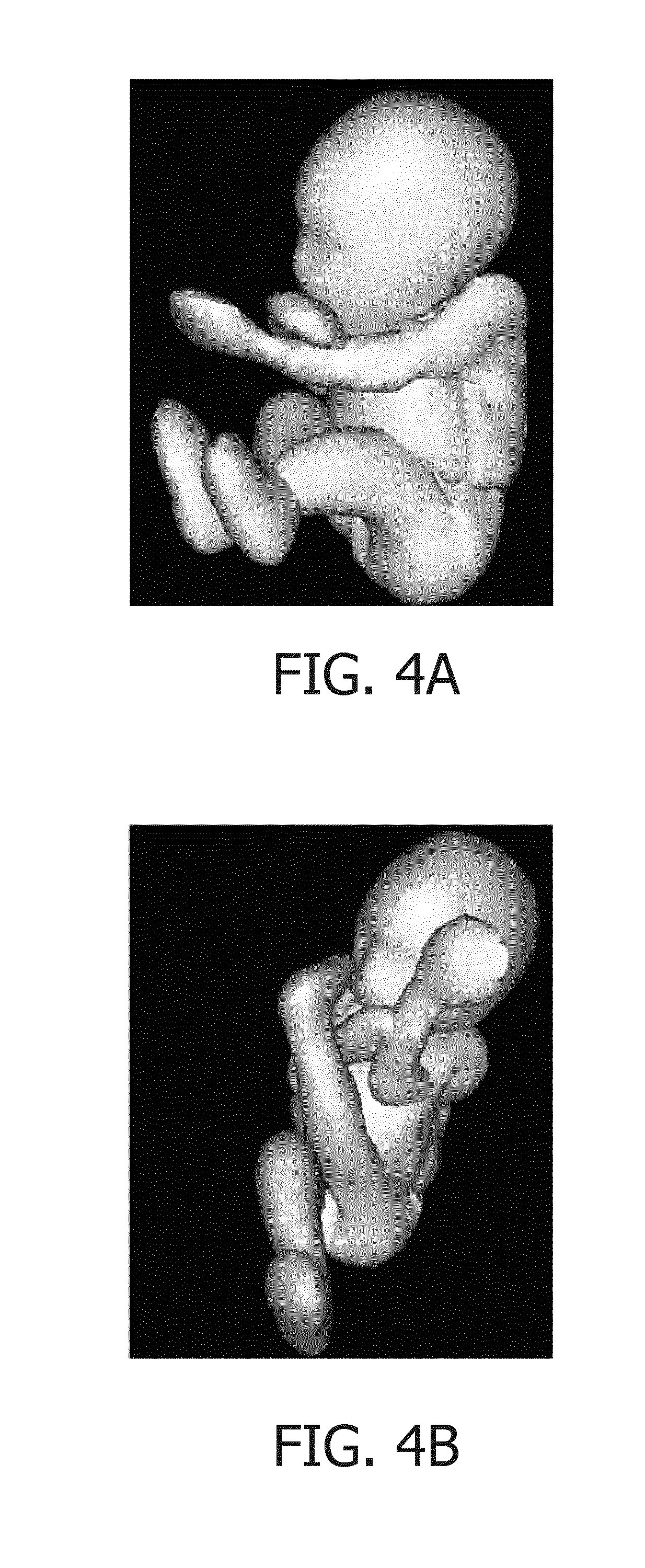3D image compounding for ultrasound fetal imaging
a 3d image and ultrasound technology, applied in the field of ultrasound fetal imaging, can solve the problems of no longer feasible or plausible mosaicking scenarios, not providing a good quality compounded image, etc., and achieve the effect of reducing the overall confidence value and improving the visualization of the volumetric region
- Summary
- Abstract
- Description
- Claims
- Application Information
AI Technical Summary
Benefits of technology
Problems solved by technology
Method used
Image
Examples
Embodiment Construction
[0049]FIG. 1 shows a schematic illustration of an ultrasound imaging system according to an embodiment generally denoted by 100. The ultrasound imaging system 100 is applied to inspect a volumetric region of an anatomical site, in particular an anatomical site of a patient 13 including a fetus 8. The ultrasound imaging system 100 comprises an ultrasound probe 10 having at least one transducer array having a multitude of transducer elements for transmitting and / or receiving ultrasound waves. The transducer elements are preferably arranged in a two-dimensional (2D) array, which is constructed to electronically steer ultrasound beams within the volumetric region such that a three-dimensional ultrasound image frame of said region is provided. Alternatively, the array may be a one-dimensional array (1D) constructed to be mechanically steered through the volumetric region in order to provide a three-dimensional ultrasound image frame. The probe 10 is adapted to transmit ultrasound waves i...
PUM
 Login to View More
Login to View More Abstract
Description
Claims
Application Information
 Login to View More
Login to View More - R&D
- Intellectual Property
- Life Sciences
- Materials
- Tech Scout
- Unparalleled Data Quality
- Higher Quality Content
- 60% Fewer Hallucinations
Browse by: Latest US Patents, China's latest patents, Technical Efficacy Thesaurus, Application Domain, Technology Topic, Popular Technical Reports.
© 2025 PatSnap. All rights reserved.Legal|Privacy policy|Modern Slavery Act Transparency Statement|Sitemap|About US| Contact US: help@patsnap.com



